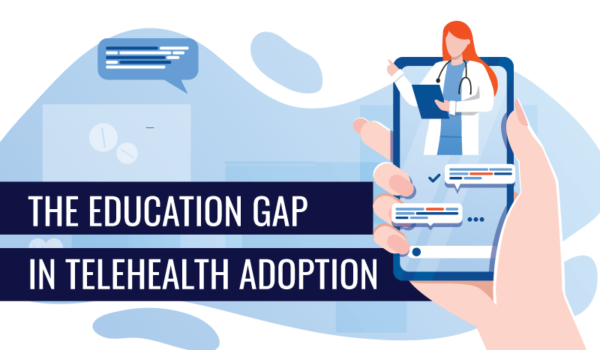Education is Critical in Marketing Telehealth Services
In our new reality, more and more of our world is now virtual. Businesses and services that relied on in-person interaction and connection are now being confronted with the need to perform those same services remotely. One industry that is primed and ready for this ‘virtual world’ is the telehealth space.
Individual technology platform companies, direct-to-consumer health and wellness brands, and hospital and doctor networks are working harder than ever to provide health and wellness information and virtual sessions to patients online. The telehealth industry is huge, estimated as a $2.6B national category expected to grow more than 9% in 2020. In March of this year alone, telehealth visits surged 50% amid the coronavirus pandemic with total virus-related virtual visits expected to top 900 million this year.
Education on the Capability is Needed
This current environment offers opportunity, but studies show that many consumers still have no understanding of what telehealth, telemedicine, or any related industry terms mean. According to a recent survey from Sykes, conducted within the height of the pandemic, 42% of US adults are not familiar with telehealth. And of those that are aware, few have engaged in the service for their own care or know someone who has.
Providers have struggled with awareness and overall adoption. Among consumers who have not used telehealth, 29% indicate that telehealth is not available to them and 37% say they do not know if it is offered by their health provider or health system. Self-reported availability is lowest in rural areas (25%) and is a segment in which telehealth providers could significantly improve with better awareness to quality care.
Regulation changes have come into place that are designed to help aide in the adoption of telehealth and telemedicine—changes that could not have come at a better time.
- LARGEST INSURER ALLOWING ACCESS: Temporarily the Centers for Medicare & Medicaid Services (CMS) can allow recipients to access telehealth. CMS covers at least 140 million Americans through Medicare, Medicaid, the Children’s Health Insurance Program, and Federal Exchanges.
- LOOSENING OF CERTAIN HIPAA REQUIREMENTS: Eligible providers can now use a smartphone or tablet to administer care or touch base with a patient in the home if there is sufficient internet connection.
- OPEN TO MORE THAN JUST DOCTORS: Nurse practitioners, physician assistants, and clinical nurse specialists are now eligible to do telehealth visits.
Where is the Opportunity?
Obviously, transitioning essential health services and care conversations to a telehealth experience is crucial at this time. In addition, with most elective procedures on hold, specialty doctors are continuing to communicate with patients through email, phone and telehealth visits. Before COVID-19, most of these doctors had a goal of driving new patients. This time is a great time to drive new patients through virtual consultations and promotions.
In the short term, you’ll need to examine your key target audiences and demographics to determine their level of awareness of telehealth and their overall openness to the platform. In the wake of coronavirus, there is opportunity and curiosity. In fact, 85% of adults ages 18+ would consider using telehealth if it were available and affordable to them should they show COVID-19 symptoms.
Looking at Different Audience Groups
Younger demographics, including Millennials and Generation Z, are the most open and willing to explore telehealth visits with medical professionals. They perceive benefit in quicker access to care and largely see the virtual experience as comparable to in-person health-related visits. Particularly among the youngest generation, Generation Z, there is a desire for convenience at all costs, with many in this age group citing that they’d gladly swap some elements of privacy for the convenience of telehealth. Sharing their data in multiple formats is normal—especially in exchange for a faster or less expensive platform.
Older cohorts, including populations above age 55, will be more skeptical of the telehealth experience, but stressing and promoting the benefit of avoiding crowded waiting rooms or long lines may be appealing to this group. Major concerns include insurance coverage as well as the accuracy and trust of a virtual consultation or diagnosis. So, in messaging to this group, you’ll need to stress a standard level of care or expertise to break through and build trust.
As we adjust to our “new normal” and begin to emerge into an altered reality, nearly all industries will change drastically. Healthcare is no different, largely due to the availability and usage rate of telehealth experiences. Now is the time to build consumer trust in your brand as a telehealth provider, when consumers are most receptive to the experience and convenience the platform provides.
Sources: Sykes, 2020 Telehealth Survey; CNBC; Fierce Healthcare; JD Power.

